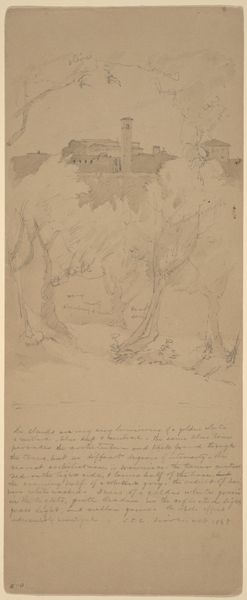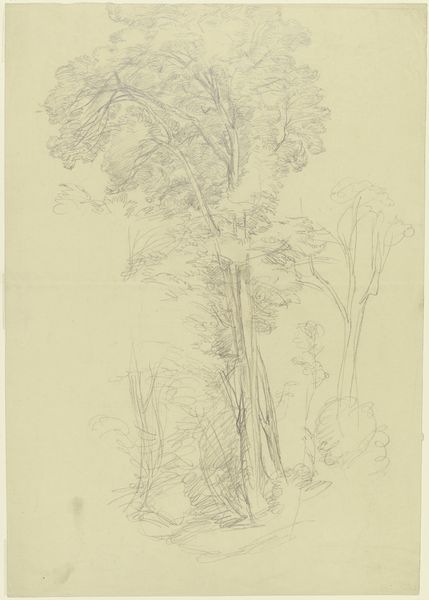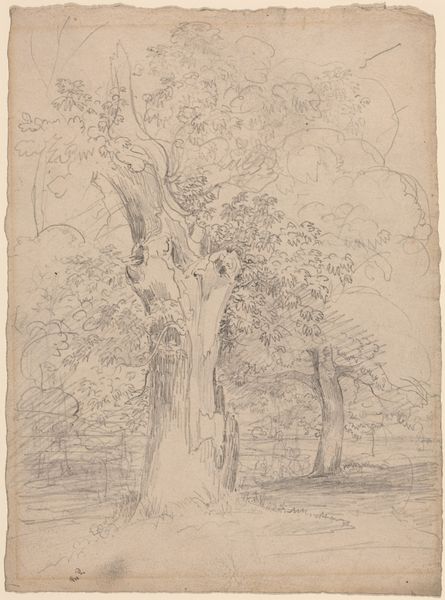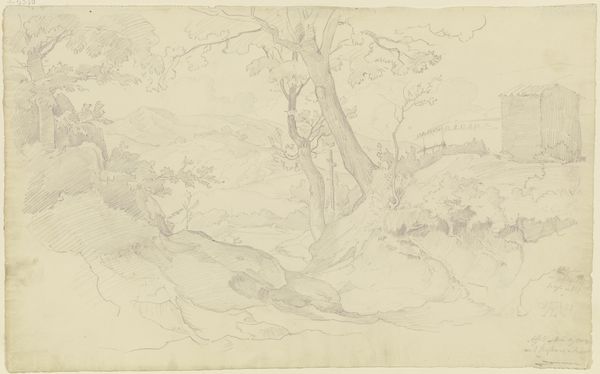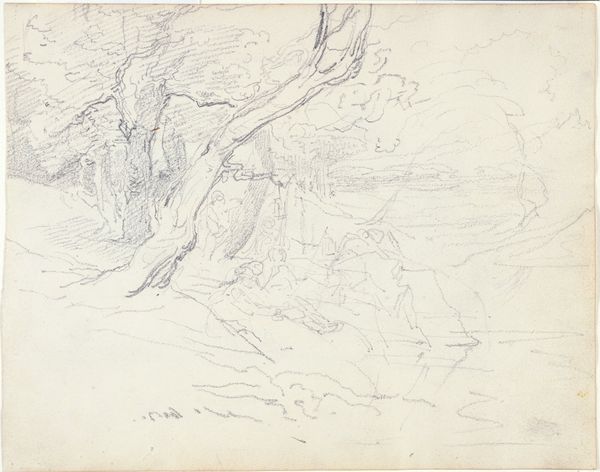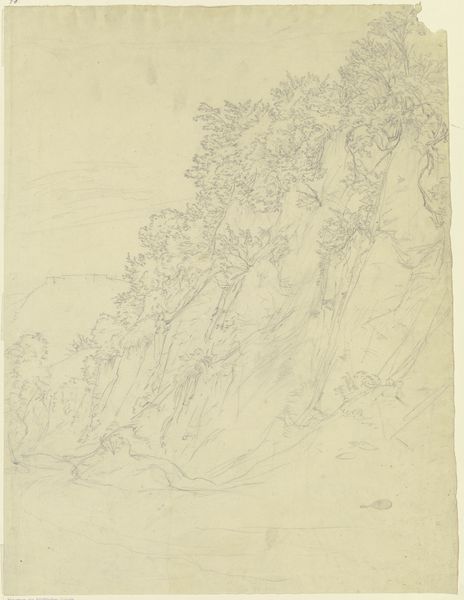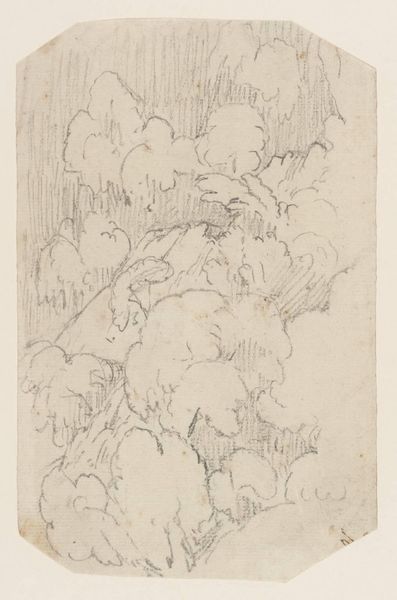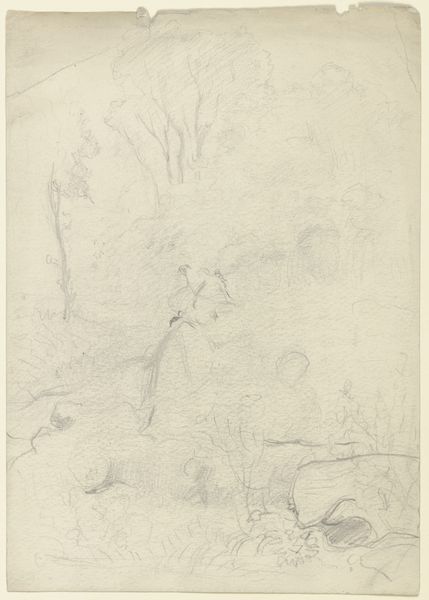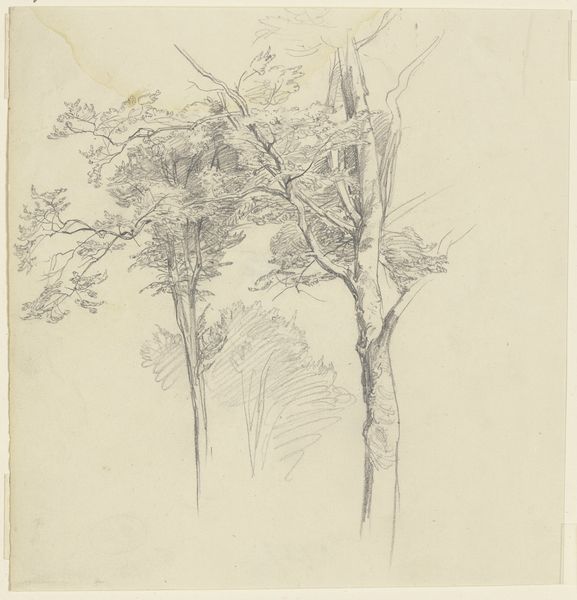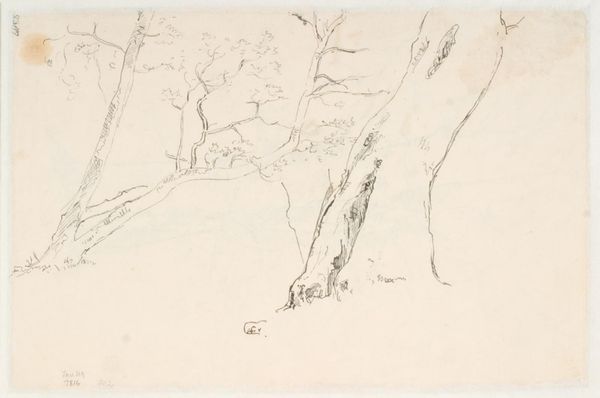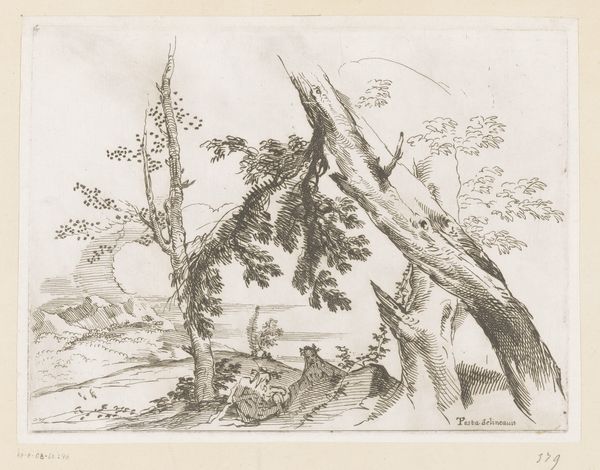
drawing, pencil
#
drawing
#
landscape
#
forest
#
pencil
#
realism
Dimensions: height 255 mm, width 192 mm
Copyright: Rijks Museum: Open Domain
Johannes Tavenraat sketched this "Boslandschap," or "Woodland Landscape," with pencil, likely sometime in the mid-19th century. Here, the forest is a powerful symbol, an archetype rooted deep in the collective unconscious. Forests are ancient symbols of mystery and the unknown. They represent a space where the rational mind can easily become lost, and where primal instincts come to the fore. Think of the forests in fairy tales, acting as settings of trials and transformations. Even the lone figure walking through the trees contributes to the symbolism, echoing figures that are found in, for example, Caspar David Friedrich's paintings. Friedrich’s wanderers often stand at the threshold between the known and the unknown. Notice the emotional power of the image. The forest engages with viewers on a subconscious level, resonating with our deepest fears and longings, while the figure represents our own journey. This cyclical motif of forest as the subconscious is a recurring theme in art history, and it highlights the non-linear, emotional, and cultural power of symbols.
Comments
No comments
Be the first to comment and join the conversation on the ultimate creative platform.
